Southwest US Snapshot: Precious Metals, Battery Metals And Uranium Activity

First Vanadium’s Carlin property is located in North-Central Nevada in Elko County. (Image courtesy of First Vanadium.)
In our annual overview of exploration and mining activity in the Southwestern US, we focus on eight companies active in the region. Precious metals appear to be the exploration target of choice in the area with battery metals (vanadium and lithium) gaining prominence.
First Vanadium
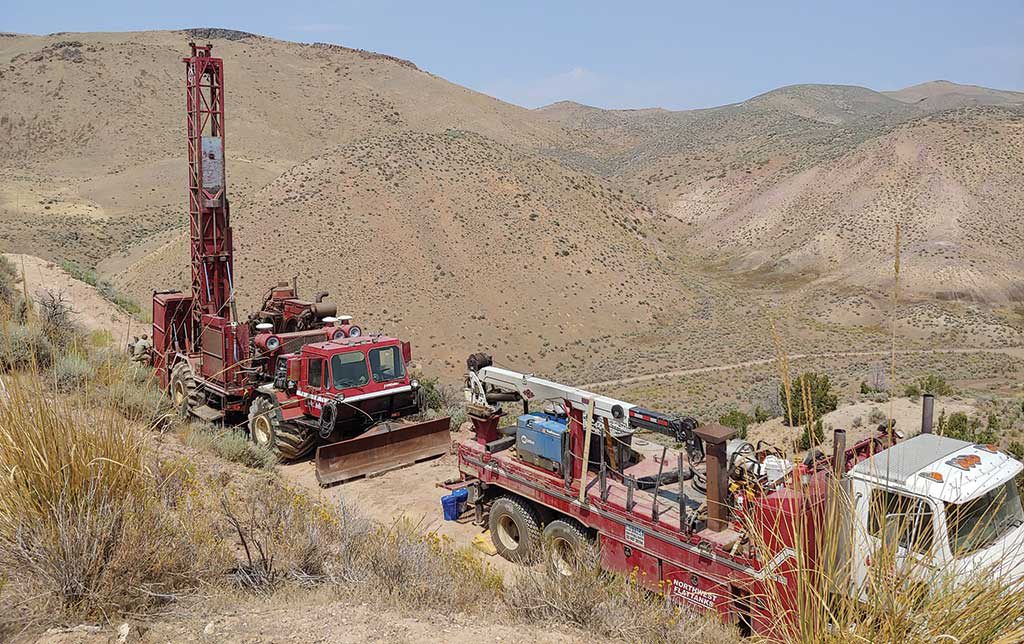
First Vanadium’s (TSXV: FVAN) flagship asset is the Carlin vanadium property, 22 km from Carlin, Nevada. The 43 sq. km property is made up of 150 mining claims. First Vanadium owns 100% of 78 of the claims, and is working to earn a 100% interest in the remaining 72 claims from a private subsidiary of Golden Predator Mining (TSXV: GPY).
The Carlin Vanadium property is host to vanadium pentoxide (V2O5) mineralization. Vanadium is used in steel production with a growing importance in energy storage for batteries. Drilling indicates the presence of a shale-hosted, shallow-dipping, near-surface mineralized unit that averages 35 meters thick, which has been traced over 1,800 meters of strike and 600 meters across, outcropping at surface. The deposit remains open. A February 2019 mineral resource estimate outlined 22.35 million indicated tonnes at 0.615% V2O5 for a total of 303 million lb. V2O5, with an additional inferred resource of 6.52 million tonnes at 0.52% V2O5 for a total of 75 million lb. V2O5. In October, the company engaged Wood Canada to prepare a preliminary economic assessment (PEA) for the project, which is expected in the first quarter of 2020.
The company also holds 100% of the 5 sq. km West Jerome property in central Arizona. West Jerome is located within an area that is host to volcanogenic massive sulphide deposits, and the company has identified a number of untested drill targets on the property. First Vanadium has a C$10.2-million market capitalization.
Kore Mining
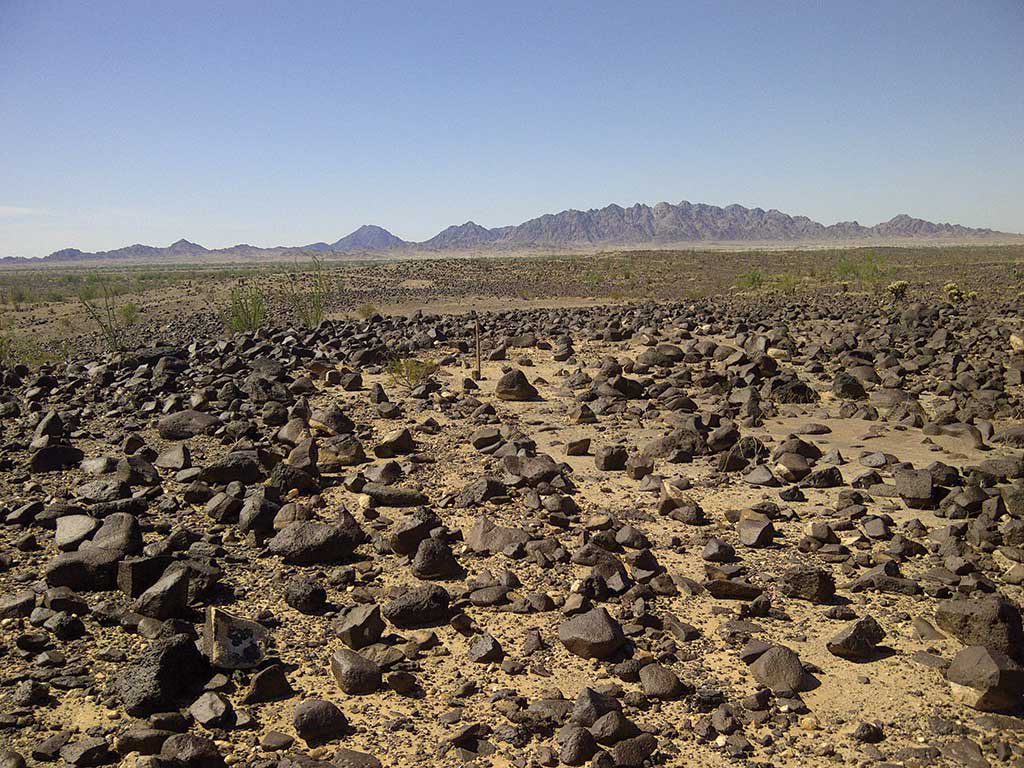
Kore Mining’s (TSXV: KORE) focus is gold exploration in California and British Columbia. The company’s whilly owned Imperial project in Imperial County, California is located within 16 km of Equinox Gold’s (TSXV: EQX, NYSE: EQX) Mesquite mine. Historic resources at the 206 sq. km Imperial project stand at 879,000 indicated oz. contained gold within 0.6 gram gold per tonne material with an additional 1.3 million inferred ounces within 0.53 gram gold material. The historic resource features oxide mineralization starting at 25 to 40 meters depth with an average width of 50 meters. Parts of the deposit remain open with additional targets identified. The Imperial project covers a 28 km trend. In May, Macquarie Bank closed a $4 million strategic investment in Kore to fund the restart of permitting, which is expected in early 2020.
The company’s wholly owned Long Valley project is located in Mono County, California. Measured and indicated resources stand at 66.8 million tonnes at 0.58 gram gold for 1.25 million oz. gold and inferred resources are at 23.6 million tonnes at 0.64 gram gold for 486,000 ounces. These include an oxide gold deposit, approximately 60 meters thick, with a current footprint of 3 km by 2 km within a larger 6 km trend. The Long Valley project features an oxide zone, with deeper sulphide mineralization. Follow up geophysics and drilling are planned for the project. While extensive historic reverse circulation drilling was completed on the 7 sq. km property, no drilling was conducted below 90 meters.
Kore Mining’s wholly owned Gold Creek and Fraser Gold projects are in the Cariboo region of British Columbia, known as the historic “gold rush” district. The 13,0 sq. km Fraser Gold property is located on strike with the gold-bearing zone that includes Spanish Mountain Gold’s (TSXV: SPA) deposit. Mineralization has been identified over a 10 km strike length. Measured and indicated resources stand at 15.2 million tonnes at 0.78 gram gold for 376,000 oz. gold and inferred resources of 27.5 million tonnes at 0.72 gram gold for a total of 634,900 ounces. The 97 sq. km Gold Creek project is 8 km northwest of the Spanish Mountain deposit. The company has a C$22-million market capitalization.
American Lithium
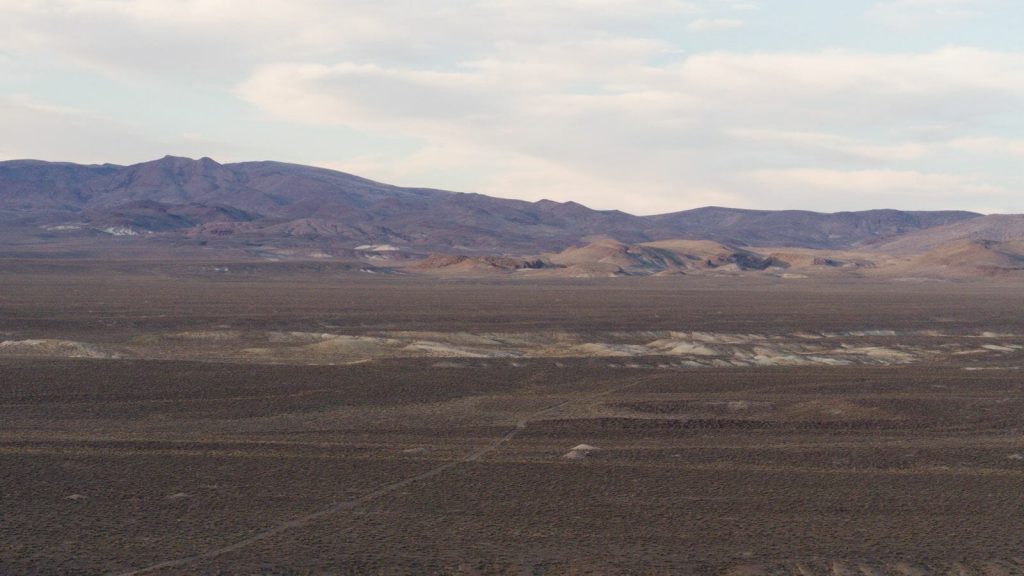
American Lithium (TSXV:LI) is exploring for sedimentary lithium carbonate deposits on its 17 sq. km Tonopath Lithium Claims (TLC) area, which is located within Nevada’s Esmeralda lithium district. The company is working to earn a 100% interest in certain claims from Alaska Nevada Mining, a private company. The TLC project is 12 km northwest of Tonopah. Drill results to date suggest the presence of flat lying, near surface free-digging lithium mineralization over an area of 6 square kilometres.
The property is host to claystone and siltstone hosted lithium mineralization with potential to produce lithium carbonate (used in battery manufacturing) through a relatively brief leaching process (versus a lengthier evaporation-based process for brine deposits), according to the company. Drill intercepts include 72 metres of 1201 parts per million lithium and 67 metres of 1237 ppm lithium. American Lithium has hired a consultant to produce a resource estimate for the TLC property. The company has also commenced environmental studies on the property. An economic study is upcoming.
The company’s Extinction Ridge project is located in the Eureka County, Nevada and has potential to host vanadium pentoxide (V2O5) mineralization. The property lies on strike with Cornerstone Metals’ (TSXV: CCC) Carlin vanadium project and Prophecy Development’s(TSX: PCY) Gibellini vanadium project. There are three areas of vanadium mineralization identified on the property so far. The company has an C$8.9-million market capitalization.
Corvus Gold
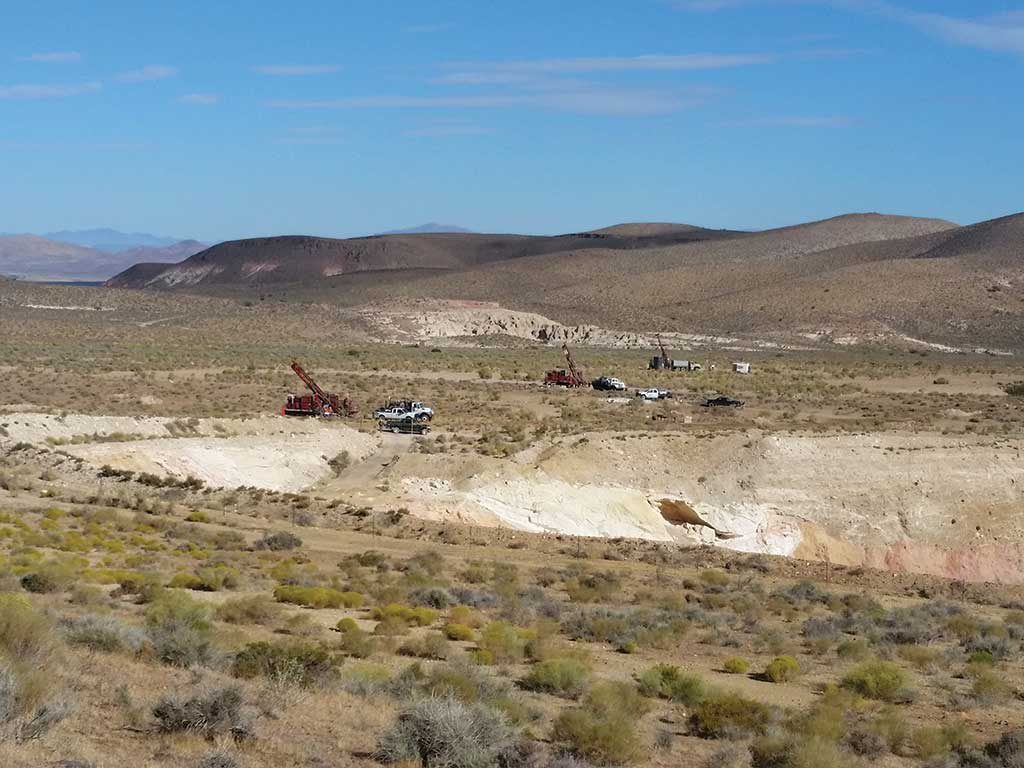
Corvus Gold (TSX: KOR) is focused on gold exploration in Nevada within the Greater Bullfrog gold district. The wholly owned North Bullfrog project is 10 km north of Beatty, Nevada and is adjacent to ground held by Kinross Gold (TSX: KGC, NYSE: K) as well as AngloGold Ashanti (NYSE: AU) and Barrick Gold’s (TSX: ABX, NYSE: GOLD) historic Bullfrog mine. Based on a 2018 resource estimate, measured and indicated resources at North Bullfrog total 158.11 million tonnes at 0.35 gram gold per tonne for a total of 1.76 million contained oz. gold, with inferred resources of 64.79 million tonnes at 0.2 gram gold for 426,000 ounces.
Bordering the 91 sq. km North Bullfrog is the company’s wholly owned Mother Lode project, which is adjacent to AngloGold and Coeur Mining (NYSE: CDE) ground. Measured and indicated resources at Mother Lode are 53.38 million tonnes grading 0.68 gram gold per tonne for a total of 1.16 million oz. gold, with additional inferred resources of 16.2 million tonnes at 0.46 gram gold for 241,000 ounces. A portion of the resources appears to be amendable to heap leaching.
A 2018 preliminary economic assessment (PEA) of the integrated Mother Lode and North Bullfrog projects outlines a potential open pit heap leach and milling operation producing an average of 347,000 oz. gold per year at estimated total costs of US$867 per gold equivalent oz. with an estimated initial capital cost of US$424 million. Corvus is examining ways to optimize the mining and processing pathways evaluated in the PEA and is collecting baseline data for permitting. There are additional exploration targets at shallow depths on the property. Drilling is ongoing to expand resources and test targets. The company’s market capitalization stands at C$229 million.
Laramide Resources
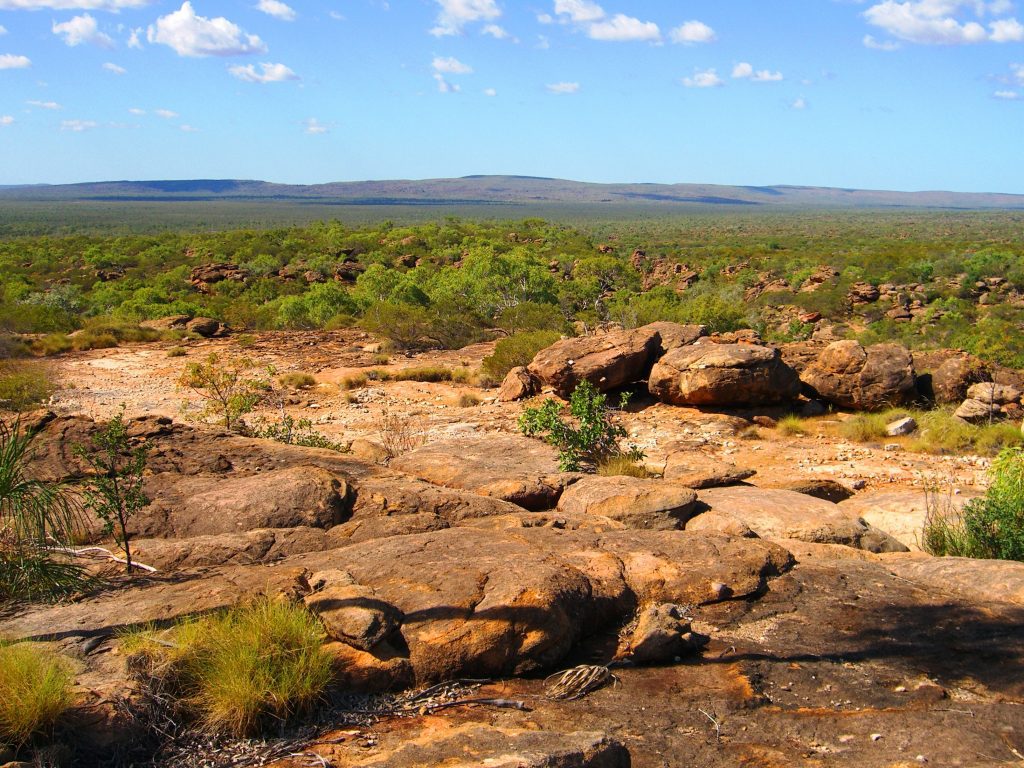
Laramide Resources (TSX: LAM; ASX: LAM) is focused on uranium in the United States and Australia. The company’s wholly owned Churchrock project, a proposed in-situ recovery uranium operation, is in the Grants mineral district in New Mexico. Inferred resources stand at 30.8 million tonnes at 0.075% uranium oxide for a total of 50.8 million lb. U3O8. Additional exploration is planned to upgrade and step-out resources, followed by a preliminary economic assessment.
The 100% owned Crownpoint project is 40 km from the Churchrock project and includes a permit for a 3 million lb. per year uranium processing plant. Inferred resources at Crownpoint stand at 2.3 million tonnes at 0.102% U3O8 for a total of 5.1 million lb. U3O8. The resource has been evaluated previously as amendable to in situ recovery.
The wholly owned La Sal project in Utah’s White Mesa mining district is the site of a potential underground hard-rock uranium mine with permits for bulk sample extraction. Energy Fuels’ (TSX: EFR, NYSE: UUUU) White Mesa mill is within 100 km of the project. The property was previously held by a subsidiary of Barrick Gold (TSX: ABX, NYSE: GOLD), which completed a feasibility study on the project but shut it down due to low uranium prices.
Laramide’s whollynowned La Jara Mesa project in Cibola County, New Mexico is a potential hard-rock underground mine with indicated resources of 1.4 million tonnes at 0.23% U3O8 for a total of 7.2 million lb. uranium oxide and inferred resources of 0.7 million tonnes at 0.2% U3O8 for a total of 3.1 million lb. uranium oxide. Permitting is underway.
The 100% held Westmoreland project in Northwest Queensland in Australia is a potential shallow open- pit operation. Indicated resources are 18.7 million tonnes at 0.089% U3O8 for a total of 36 million lb. uranium oxide and additional inferred resources of 9 million tonnes at 0.083% U3O8 for a total of 15.9 million lb. uranium oxide.
Laramide also wholly owns the 684 sq. km Murphy project, which is adjacent to and on strike with the company’s Westmoreland project, within the Murphy Uranium province. The company has a current market capitalization of approximately C$28 million.
McEwen Mining
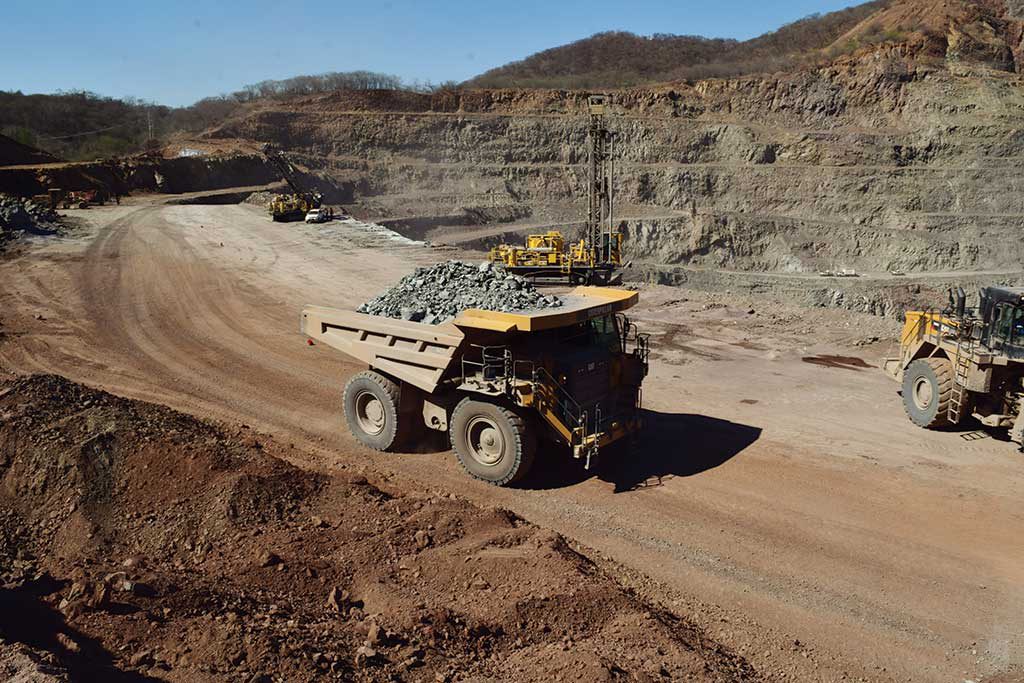
McEwen Mining (TSX: MUX; NYSE: MUX) is focused on gold and silver production in the Americas. The company’s chairman and chief owner (at 22% of common shares outstanding) is Rob McEwen, the founder and former chairman and CEO of Goldcorp.
The company holds a 49% interest in the San José 1,650-tonne-per-day underground mine in Santa Cruz, Argentina (51% Hochschild Mining [LSE: HOC]). San José is 20 km north of Newmont-Goldcorp’s (TSX: NGT; NYSE: NEM) Cerro Negro project. In 2018, San José produced 47,331 oz. gold and 3.02 million oz. silver on an attributable 49% basis. Production guidance for 2019 is for 49,000 oz. gold and 3.23 million oz. silver attributable, at estimated all-in sustaining costs (AISCs) of US$1,120 per gold equivalent ounce. The company plans to spend US$5 million on exploration this year at San Jose, which is situated on a 2781 sq. km land package.
The company’s 1700 sq. km El Gallo complex is in Mexico’s Sinoala state. Gold production was realized from El Gallo between 2012 and 2018. Mining ceased in 2018 due to a transition to sulphide mineralization. Production guidance this year is for 16,000 gold equivalent oz. at AISCs of US$975 per gold equivalent oz. based on residual production from heap leaching. The proposed redevelopment of El Gallo is known as the Fenix project. The project includes the construction of a mill to reprocess heap leach material and later process open pit ore.
The Gold Bar mine in Eureka County, Nevada is in the Battle Mountain-Eureka-Cortez trend, and is 40 km away from the Cortez-Goldstrike operation, which is part of Nevada Gold Mines, a 61.5% and 38.5% joint venture between Barrick Gold (TSX: ABX; NYSE: GOLD) and Newmont Goldcorp. The mine achieved commercial production in May, and is currently a heap leach operation. The company expects the mine will produce between 30,000 and 33,000 oz. of gold this year at AISCs of US$975 per ounce. Next year, the company believes Gold Bar will produce 65,000-70,000 ounces.
Its 51 sq. km Black Fox mine complex in the Timmins gold camp includes the Stock and Black Fox properties. The Black Fox mine is currently an underground operation with 2019 production guidance of 36,000 oz. to 40,000 oz gold. In 2020, the company plans to scale back Black Fox production to advance the development of the adjacent Froome underground deposit. The Stock property is host to the Black-Fox Stock mill and features a number of exploration targets. The company has a US$18 million exploration budget for the Timmins complex this year.
The wholly owned Los Azules project in San Juan, Argentina is a porphyry-copper asset with indicated resources of 962 million tonnes at 0.48% copper, 1.8 grams per tonne silver and 0.06 gram gold for a total of 10.2 billion lb. copper, 55.7 million oz. silver and 1.7 million oz. gold, with additional inferred resources of 2.67 billion tonnes at 0.33% copper, 1.6 grams silver and 0.04 gram gold for a total of 19.3 billion lb. copper, 135.4 million oz. silver and 3.8 million oz. gold. The company has a C$784-million market capitalization.
Fiore Gold
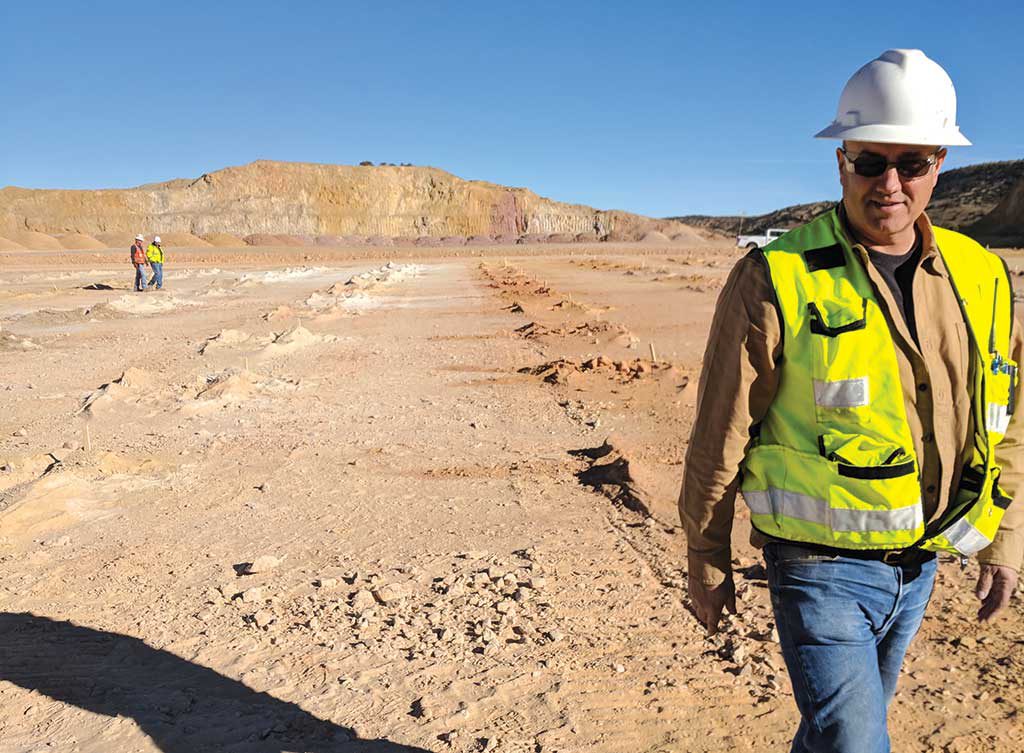
Fiore Gold (TSXV: F) is focused on ramping up gold production across its assets in the western United States and South America.
The company’s Pan gold project is 28 km southeast of Eureka, Nevada and covers 42 square kilometres. The Pan open pit utilizes heap leaching, and is expected to produce an estimated 45,000 to 50,000 oz. gold over the next 12 months. Measured and indicated resources at Pan stand at 27.6 million tonnes grading 0.49 gram gold per tonne for a total of 432,000 contained oz. gold and inferred resources tally 7.58 million tonnes at 0.45 gram gold for a total of 111,000 ounces. Near-mine and regional targets have been identified on the property for follow up drilling.
Thirteen kilometres from Pan is the company’s 203 sq. km Gold Rock property. Gold Rock’s indicated resources stand at 9 million tonnes grading 0.82 gram gold for 238,700 oz. contained gold with another 7.79 million inferred tonnes at 0.72 gram gold for a total of 180,900 ounces. The company holds federal mining permits for the project, while a feasibility study and production decision is expected in 2021. The project is located within a 16 km prospective trend, and Fiore Gold has identified a number of exploration targets. A resource update and PEA are forthcoming.
In addition, Fiore holds exploration properties in Chile: the 15 sq. km Cerro Tostado project, immediately south of Yamana Gold’s (TSX: YRI, NYSE: AUY) El Penon mine, and the high-sulphidation Rio Loa project in the northern part of the Maricunga gold belt.
The company’s goal is to grow gold production to the 150,000 oz. per year level through expanding output from the Pan project, developing the Gold Rock project, and acquiring additional assets at or near the production stage. Fiore Gold has a C$39-million market capitalization.
Victory Metals
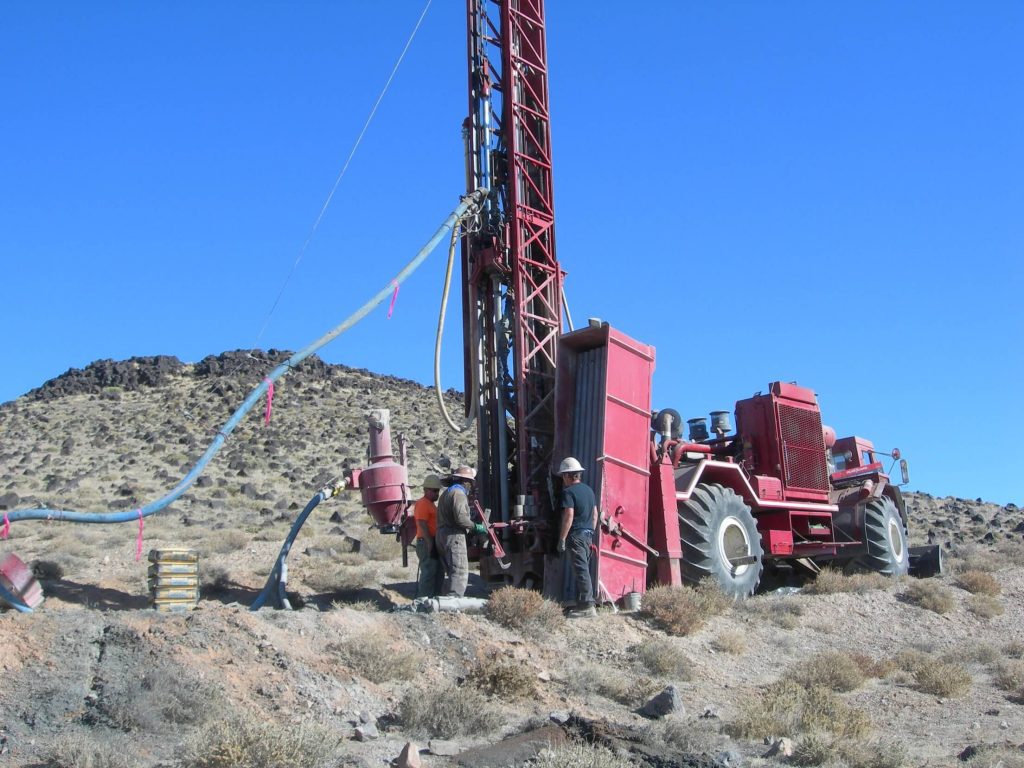
Victory Metals (TSXV: VMX) is advancing its 54 sq. km Iron Point vanadium project in Nevada, 35 km from Winnemucca. Exploration has identified vanadium mineralization starting at surface and down to a depth of 175 meters, with two higher-grade zones averaging 40 meters thick identified within the mineralization. Intercepts include 37 meters 0.55% vanadium pentoxide (V2O5) and 23 meters 0.63% V2O5.
Initial metallurgical work suggests vanadium recoveries of up to 94.3% based on a hydrometallurgical process at ambient pressure with additional metallurgical testwork pending. McClelland Laboratories is completing the metallurgical testing. EM Strategies, an environmental permitting firm, has been contracted to begin surveys, liaise with authorities and assist with permitting, and Mine Development Associates is advising the company on future drill hole locations as well as on understanding potential resources. A resource estimate is pending, to be followed by a preliminary economic assessment.
In May, the company announced that it has entered into an option agreement with Ethos Gold (TSXV: ECC), where Ethos may earn a 50% interest in Victory Metals’ Iron Point project precious metals rights by spending $5 million over three years. The agreement includes a provision that should vanadium mineralization be identified in proximity to precious metals, vanadium mining will receive preference. Victory has a veto on any precious metals mining rights that may interfere with a vanadium deposit development. Ethos believes Iron Point contains a potential deep Carlin-style gold deposit. The company has a C$42-million market capitalization.
www.mining.com


